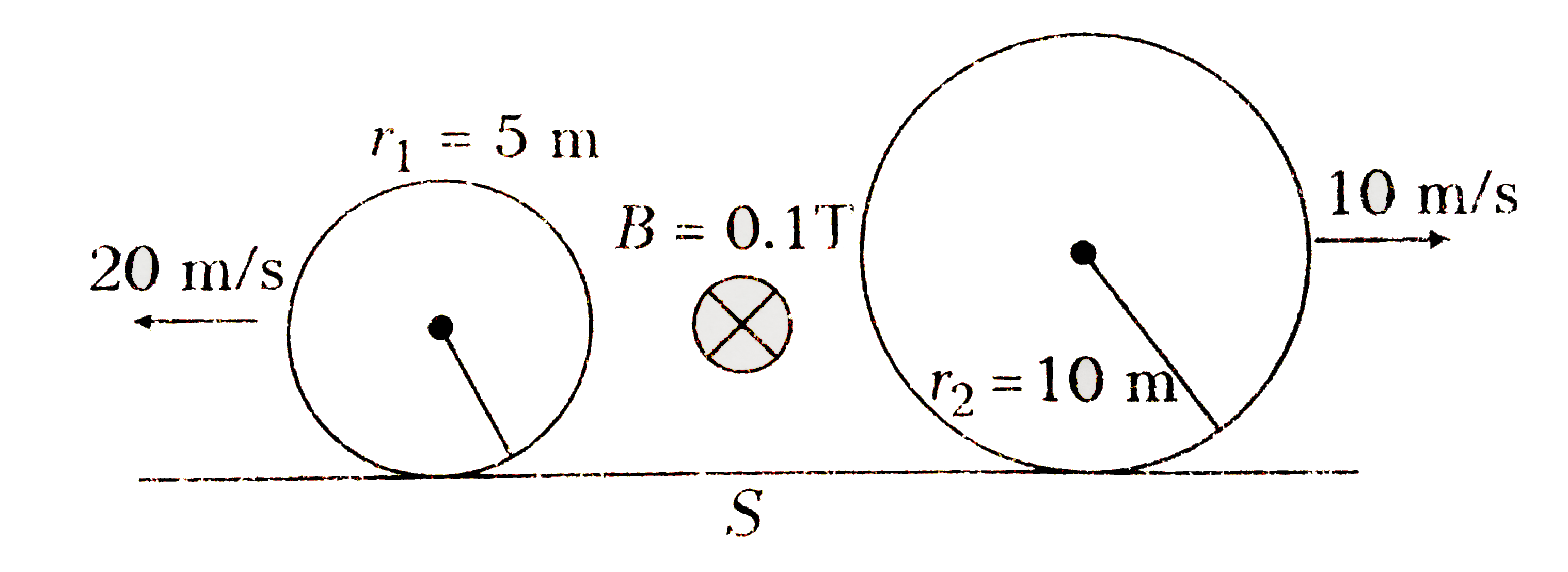Two trains, each 50 m long are travelling in opposite direction with velocity 10 m/s and 15 m/s. The time of crossing is
2s
4s
The correct Answer is:B
Step by step video & image solution for Two trains, each 50 m long are travelling in opposite direction with velocity 10 m/s and 15 m/s. The time of crossing is by Physics experts to help you in doubts & scoring excellent marks in Class 12 exams.
Updated on:21/07/2023Topper's Solved these Questions
- Motion in Straight Line BOOK - VMC MODULES ENGLISHCHAPTER - Motion in Straight Line EXERCISE - IN-CHAPTER EXERCISE-I
10 Videos
- Motion in Straight Line BOOK - VMC MODULES ENGLISHCHAPTER - Motion in Straight Line EXERCISE - IN-CHAPTER EXERCISE-J
10 Videos
- Motion in Straight Line BOOK - VMC MODULES ENGLISHCHAPTER - Motion in Straight Line EXERCISE - IN-CHAPTER EXERCISE-G
10 Videos
- MOTION IN A STRAIGHT LINE & PLANE BOOK - VMC MODULES ENGLISHCHAPTER - MOTION IN A STRAIGHT LINE & PLANE EXERCISE - IMPECCABLE
52 Videos
- Motion in Two DimensionsBOOK - VMC MODULES ENGLISHCHAPTER - Motion in Two DimensionsEXERCISE - MCQ
2 Videos
Similar Questions
Two rings of radii 5m and 10m move in opposite directions with velocity 20 m/s and 10 m/s respectively, on a conducting curface S. There is a uniform magnetic field of magnitude 0.1T perpendicular to the plane of the rings. Find the potential difference between the highest points of the two rings.

View SolutionTwo toy trains each of mass 'M' are moving in opposite directions with velocities v1 and v2 over two smooth rails. Two stuntmen of mass 'm' each are also moving with the trains (at rest w.r.t. trains). When trains are opposite to each other the stuntmen interchange their positions, then find the final velocities of the trains.
View Solution
Knowledge Check
A train A which is 120 m long is running with velocity 20 m/s while train B which is 130 m long is running in opposite direction with velocity 30 m/s. What is the time taken by train B to cross the train A?
A5 sB25 sC10 sD100 sTwo trains 121 m and 99 m in length are running in opposite directions with velocities 40kmh−1 and 32kmh−1. In what time they will completely cross each other?
Aa. 9 sBb. 11 sCc. 13 sDd. 15 sA wave is represented by the equation
y=Asin(10πx+15πt+π/3)
Where x is in metre and t is in second.
a wave travelling in the positive x-direction with a velocity of 1.5 m/s
a wave travelling in the negative x-direction with a velocity 1.5 m/s
a wave travelling in the negative x-direction with a wavelength of 0.2 m
a wave travelling in the positive x-direction with a wavelength 0.2 mAa wave travelling in the positive x-direction with a velocity of 1.5 m/sBa wave travelling in the negative x-direction with a velocity 1.5 m/sCa wave travelling in the negative x-direction with a wavelength of 0.2 mDa wave travelling in the positive x-direction with a wavelength 0.2 m
Two particles are projected from a tower horizontally in opposite directions with velocities 10m/sand20m/s. Find the time when their velocity vectors are mutually perpendicular. Take g=10m/s2.
View SolutionTwo trains having lengths 120 m and 100 m running in the opposite directions with velocities 40 km/h and 50 km/h. In what time they will completely cross each other?
View SolutionTwo trains 110m and 90m log respectively, are trunning in opposite directions with velocities 36kmh−1 and 54kmh−1 Find the time taken by the trains to completely cross each other.
View SolutionTwo trains A and B are moving in the same direction with velocities 30 m/s and 10 m/s respectively, B is behind from A, blows a horn of frequency 450 Hz. Then the apparent frequency heard by B is (The velocity of sound is 330 m/s) :-
View SolutionA 175 m long train is travelling along a straight track what a velocity 72kmh−1. A bird is flying parallel to the train in the opposite direction with a velocity 18kmh−1. The time taken by the bird to cross the train is
View Solution
